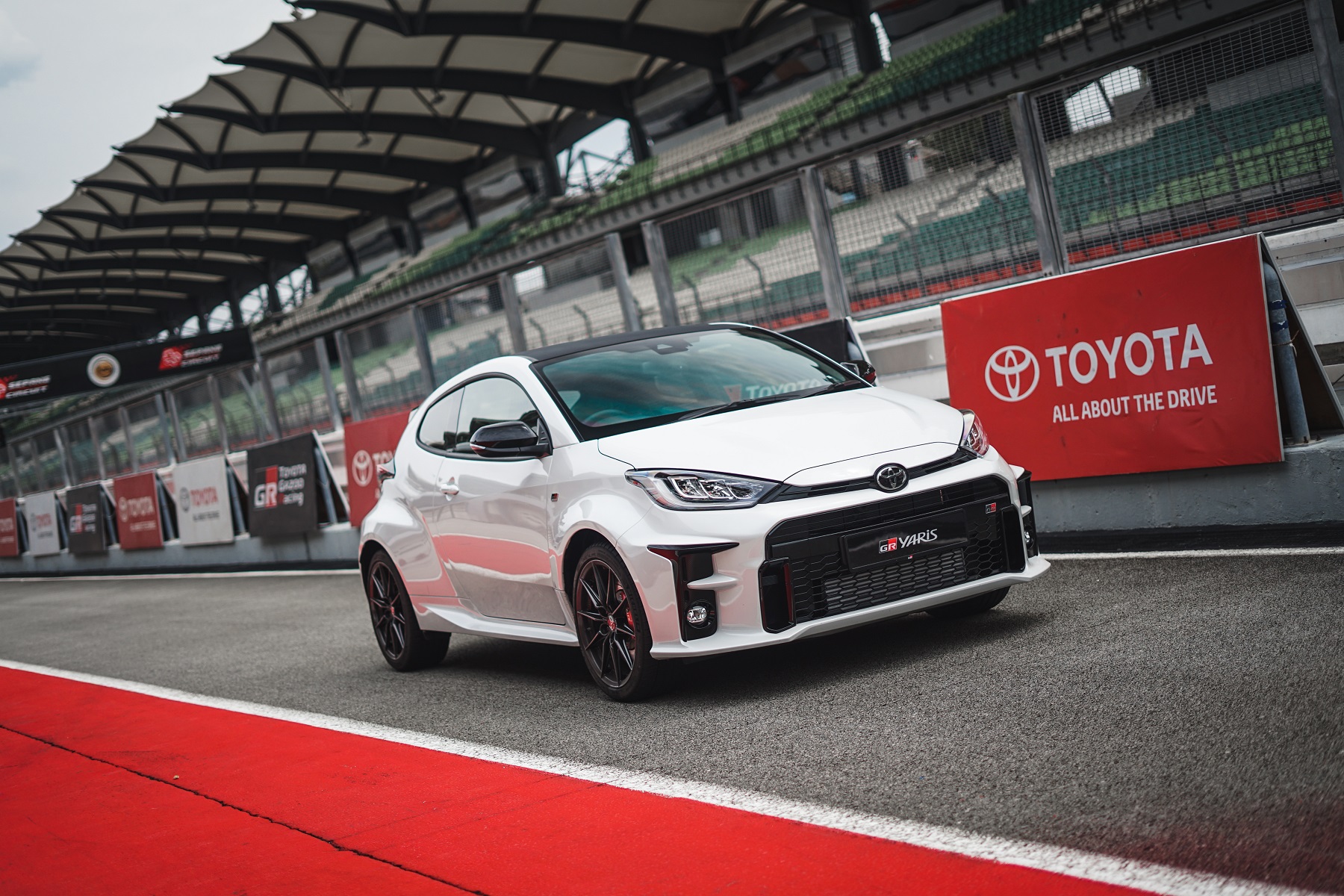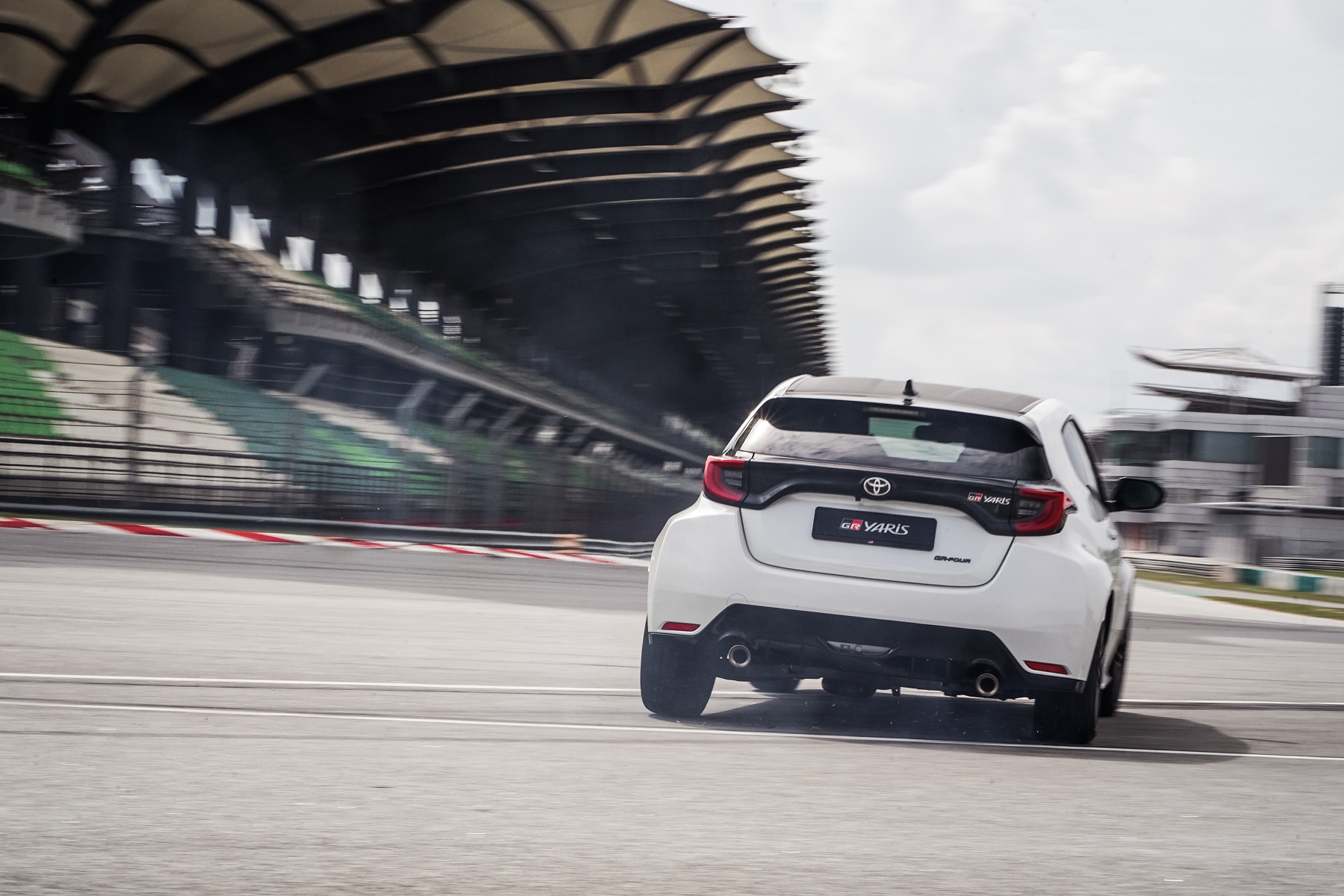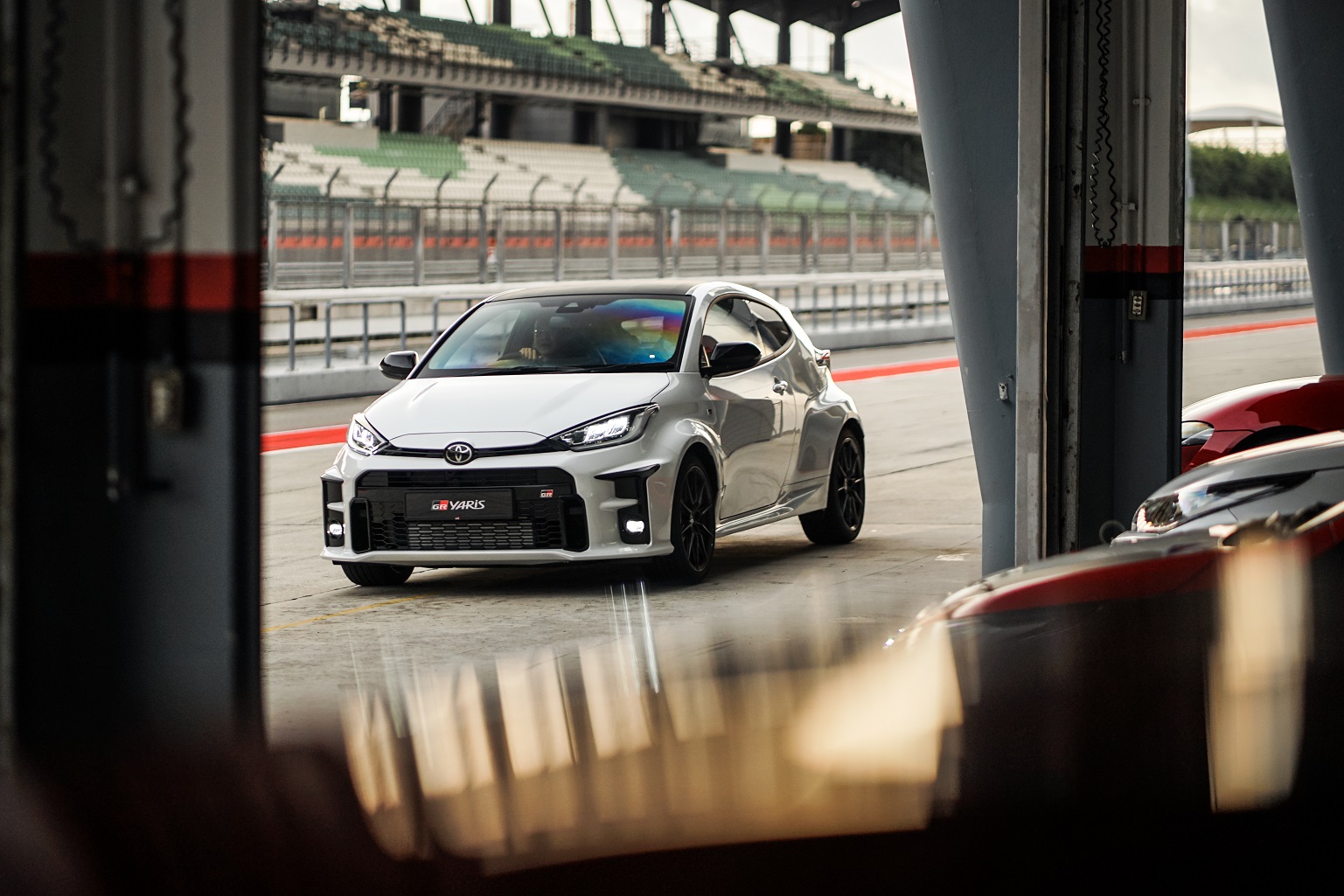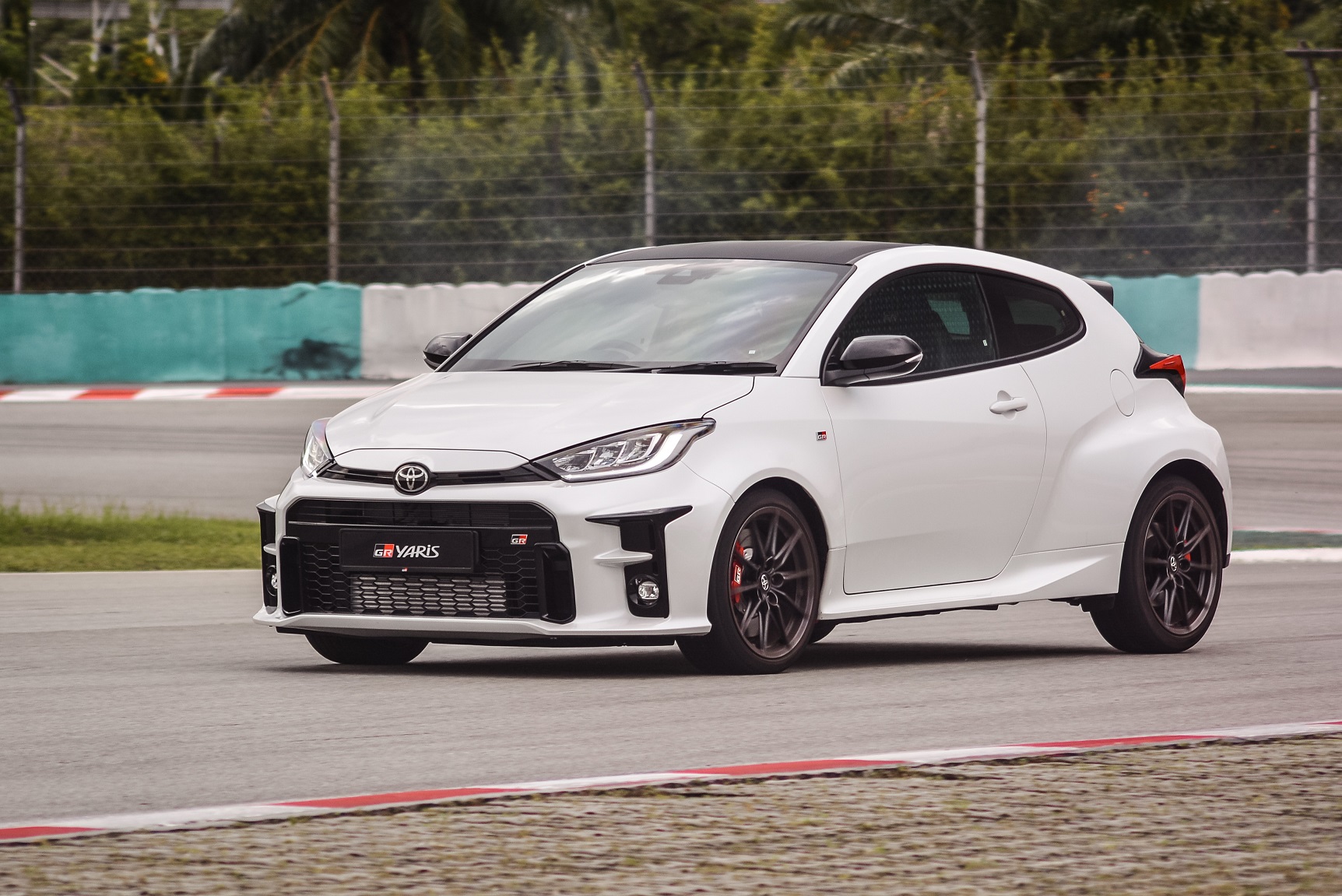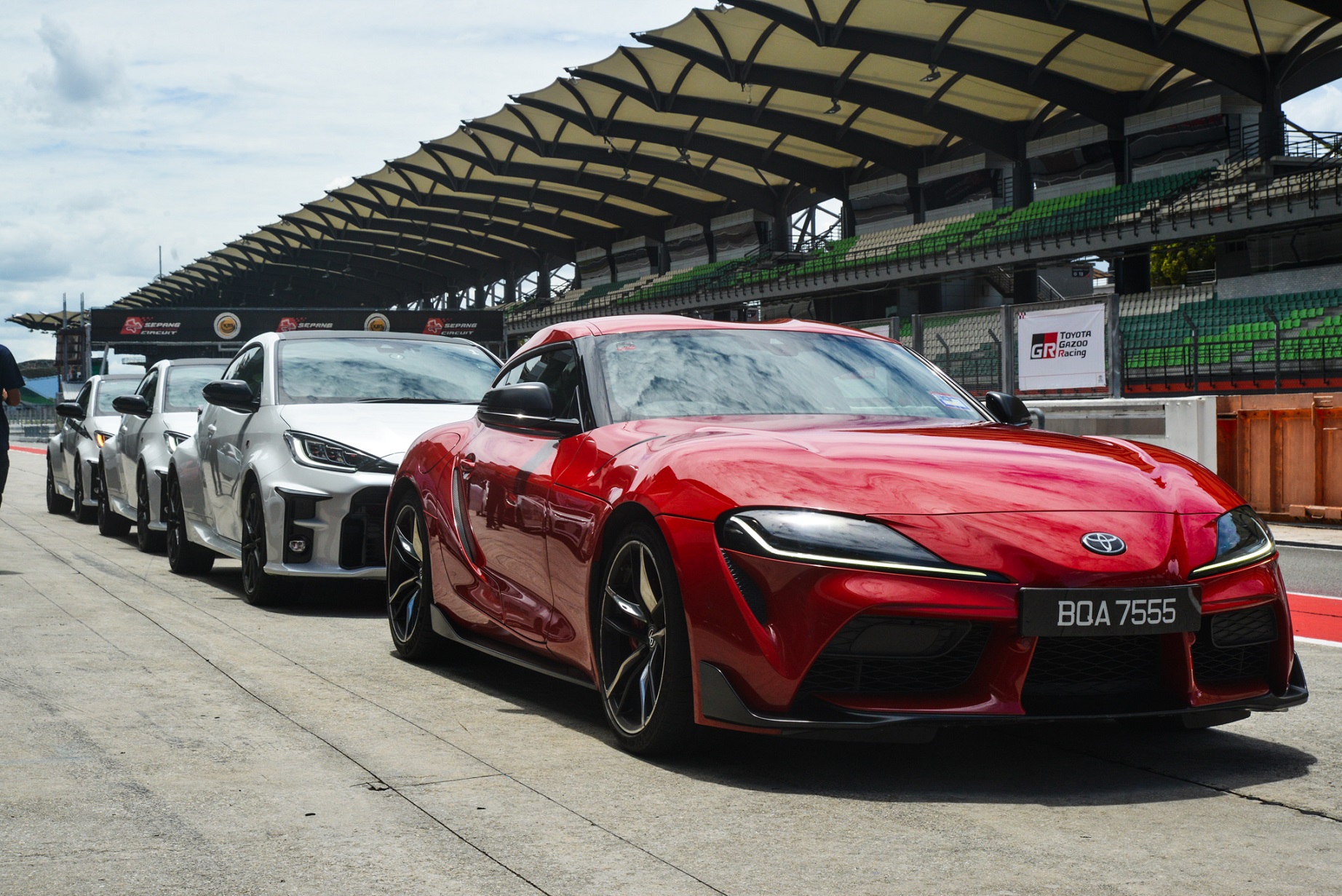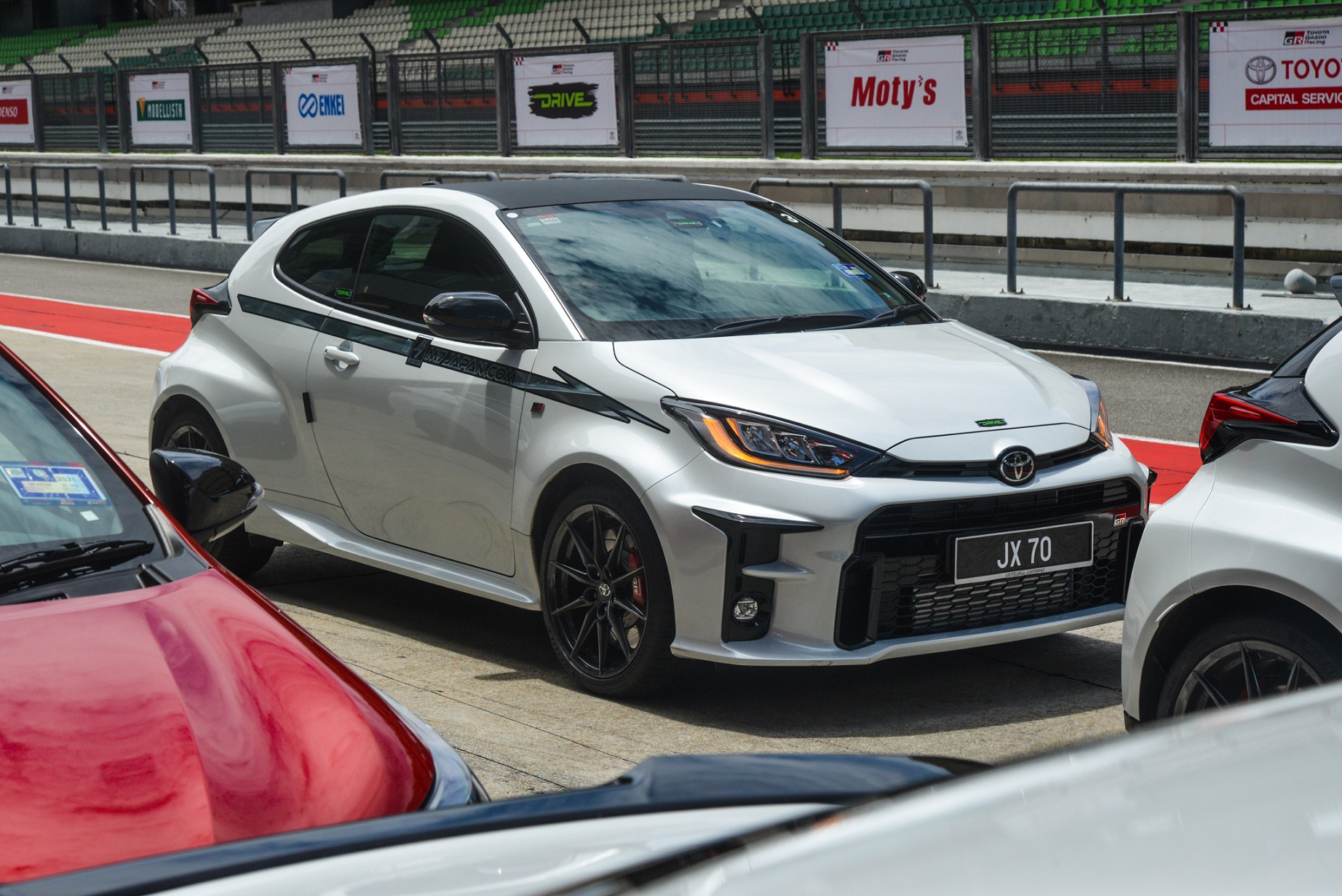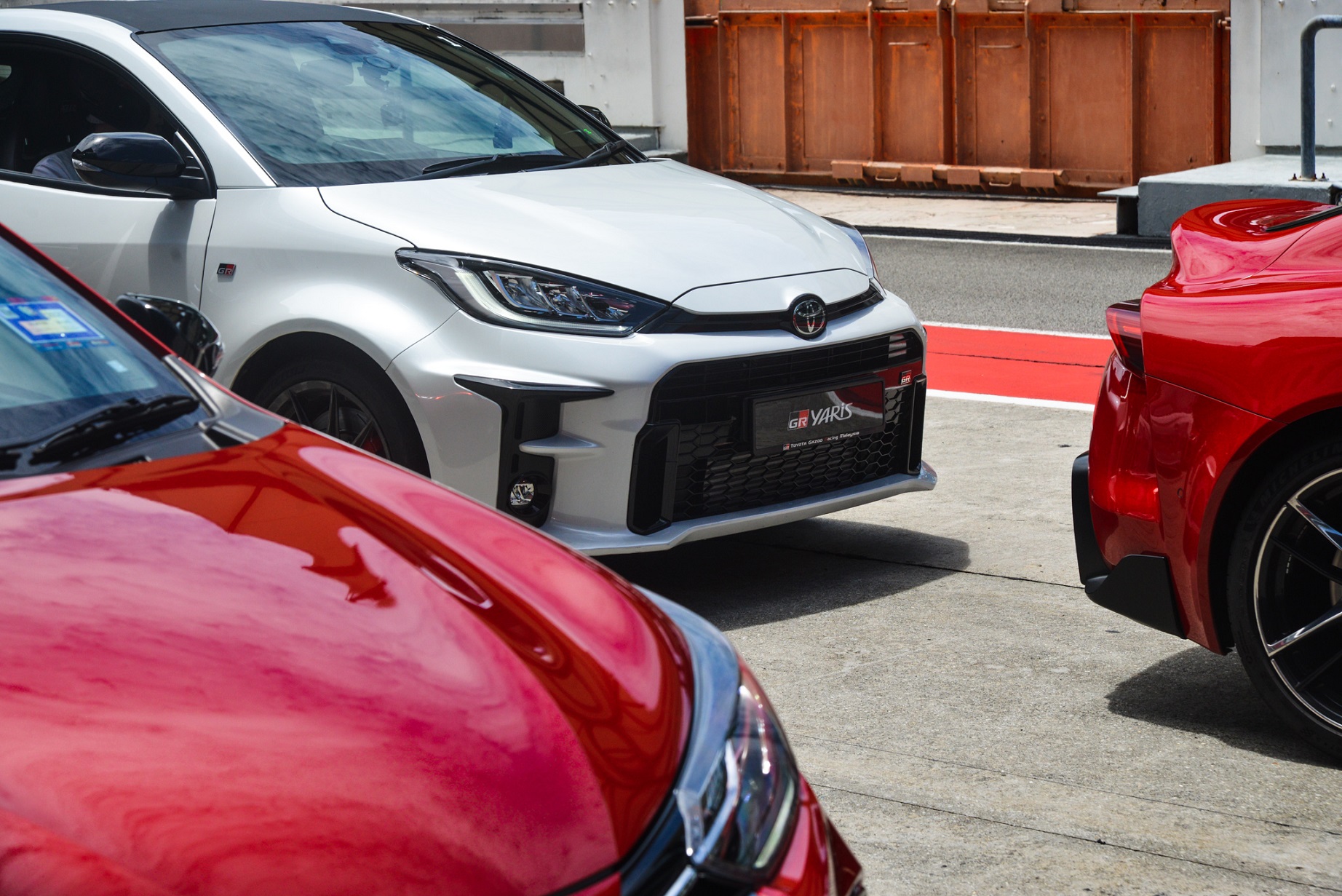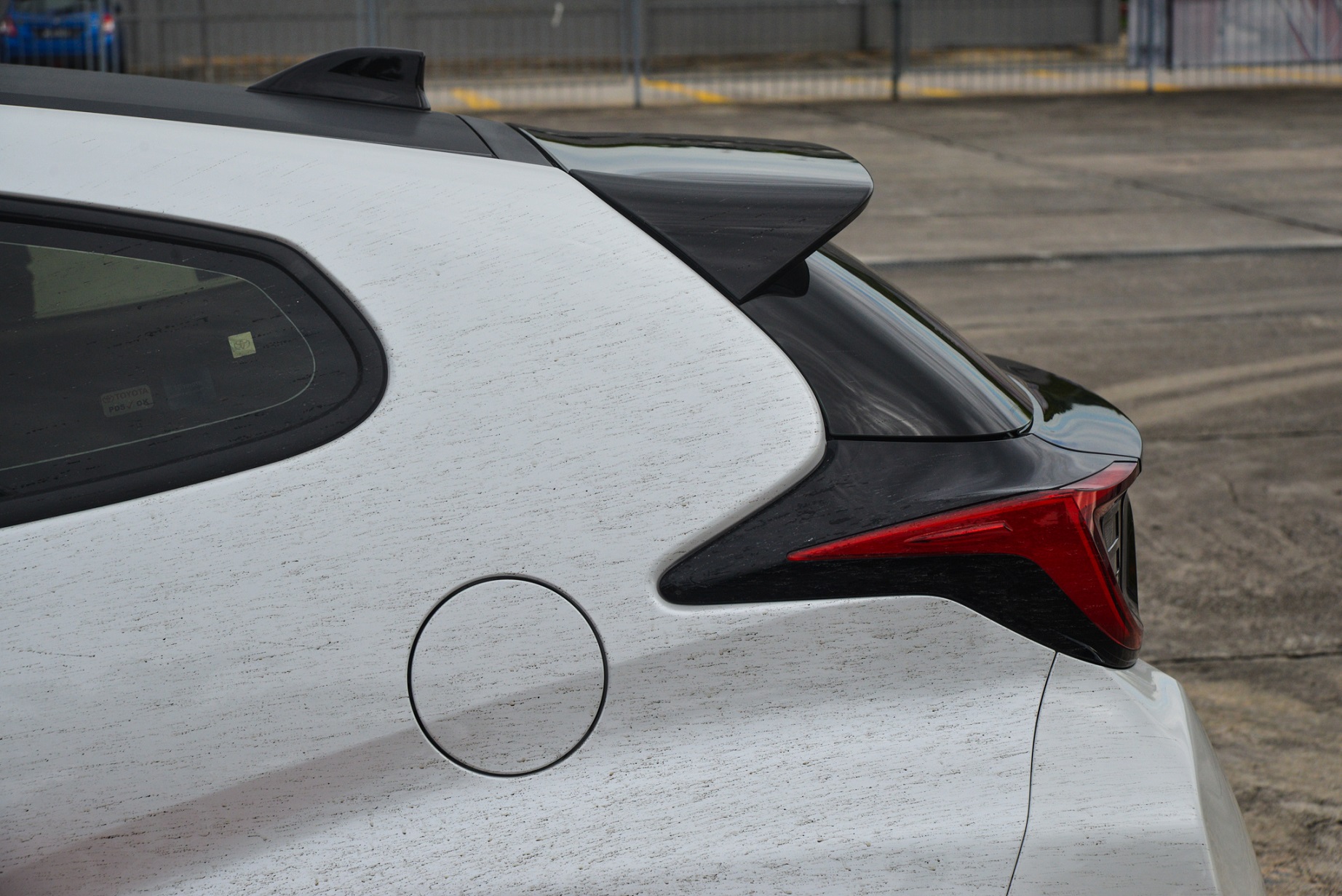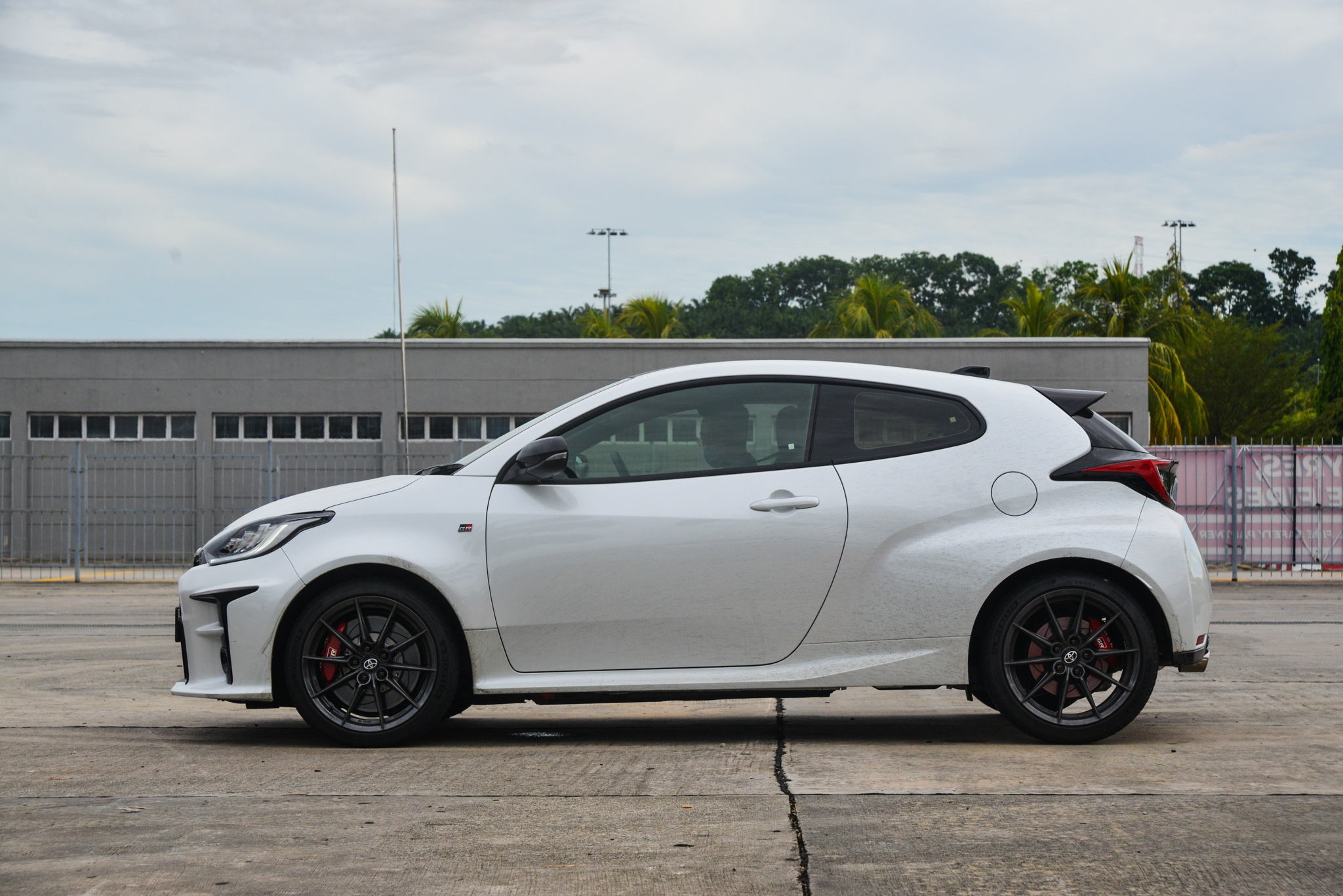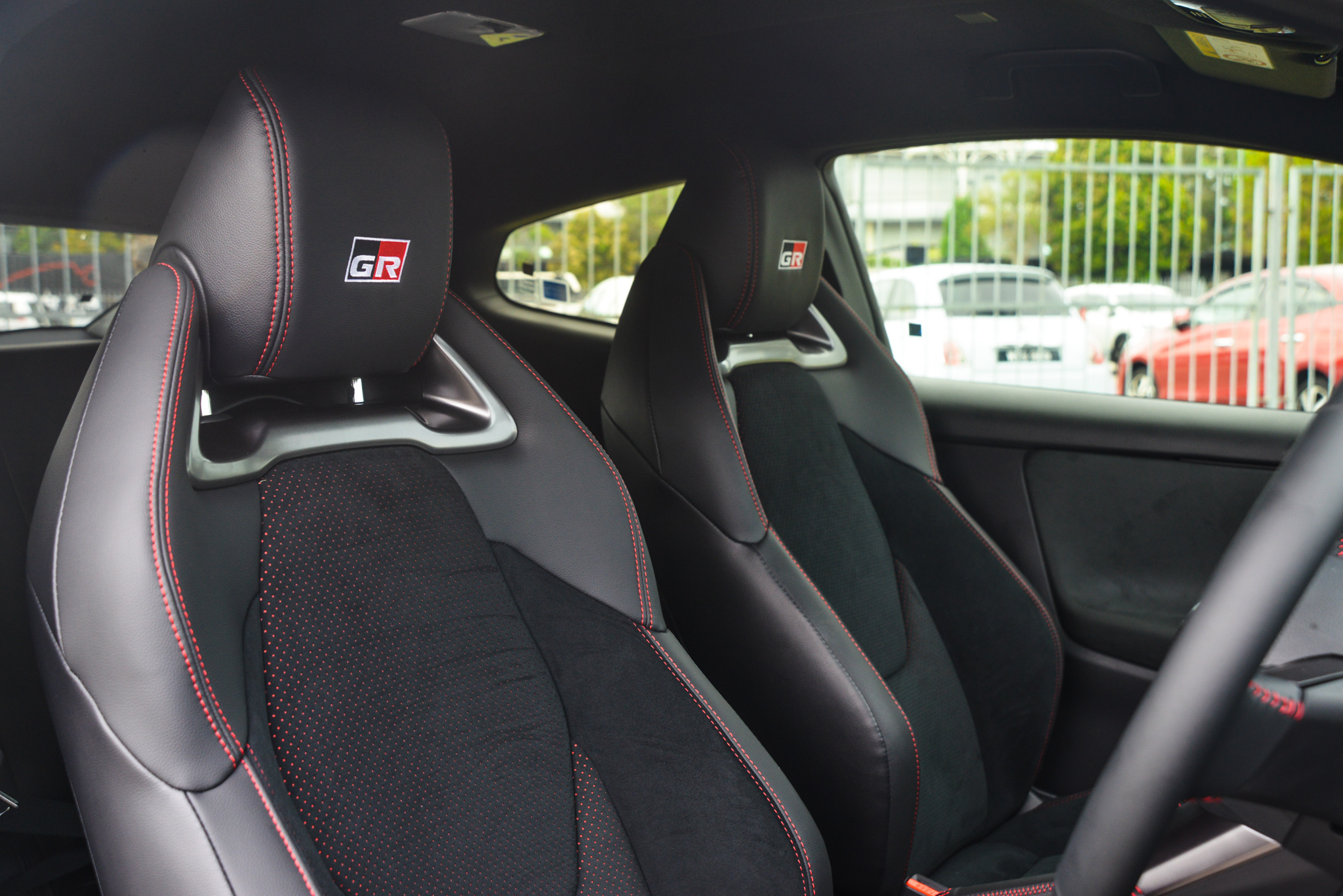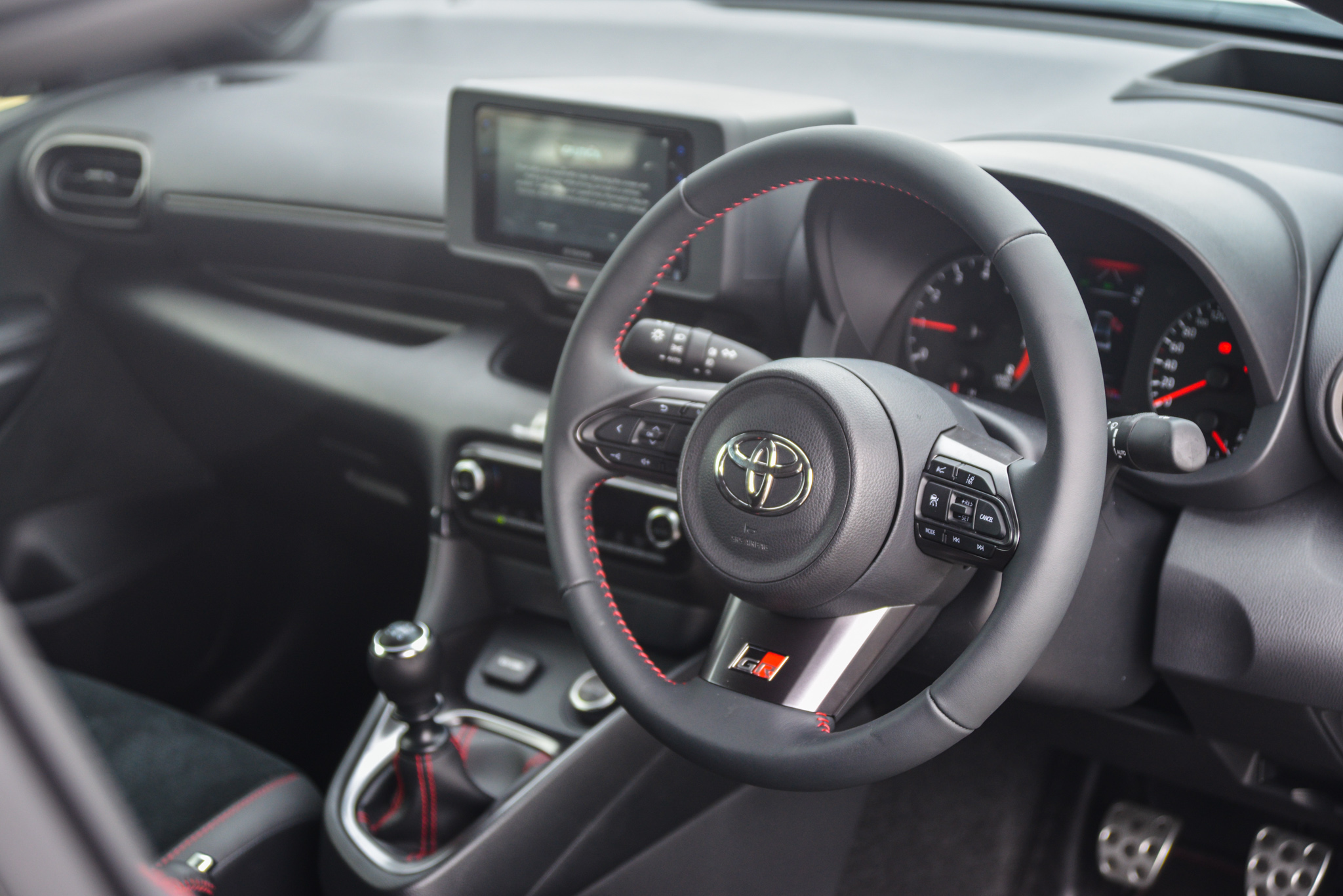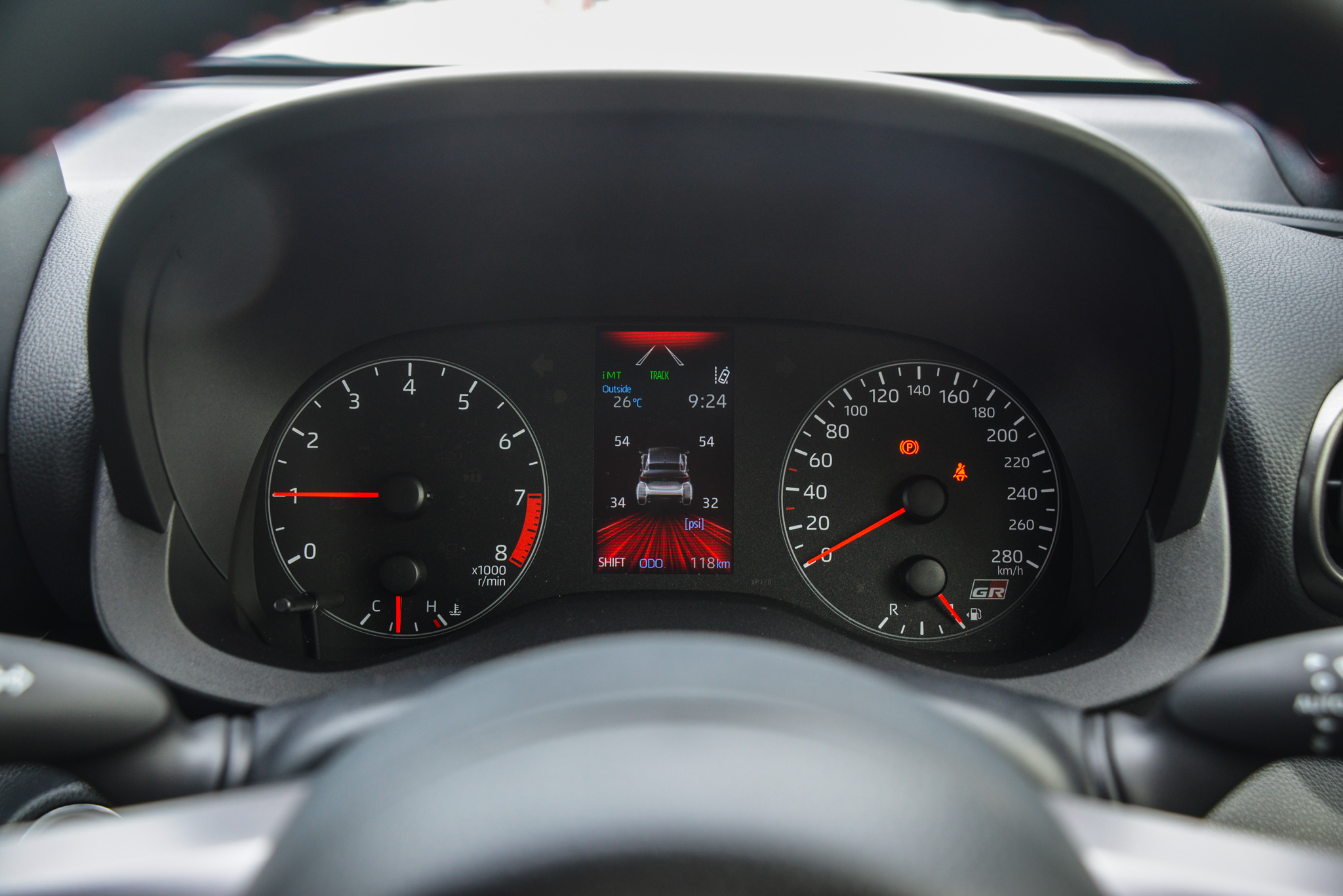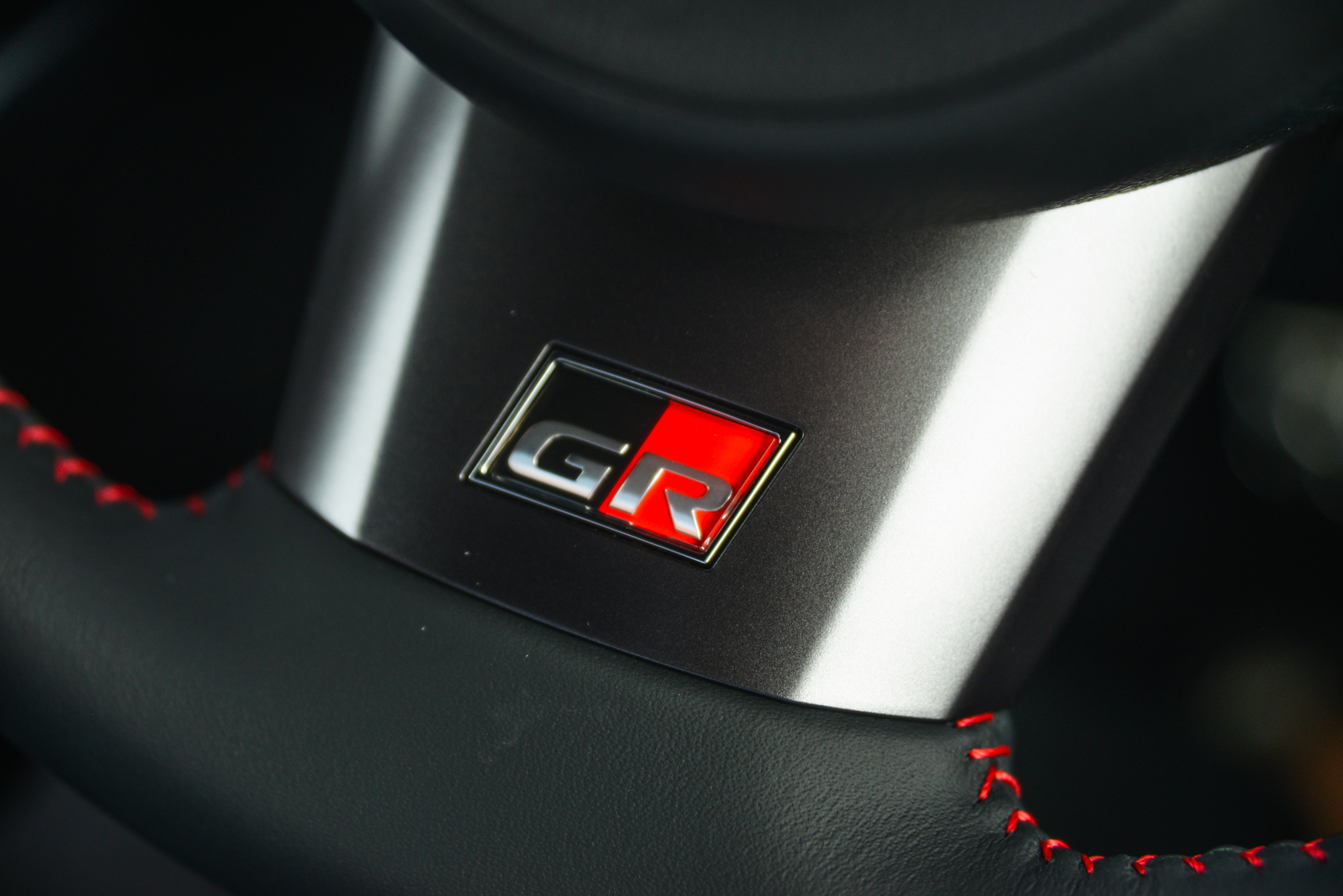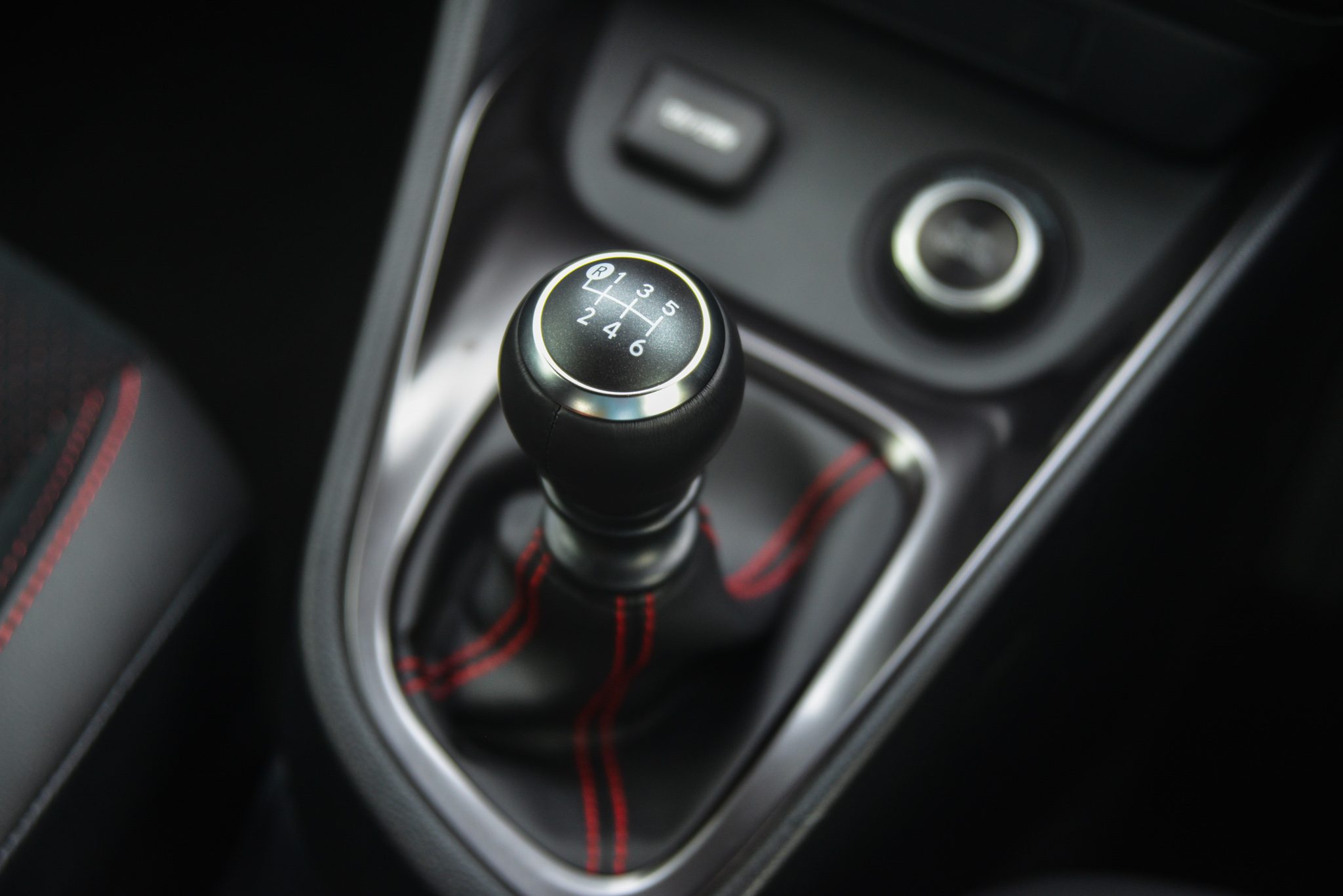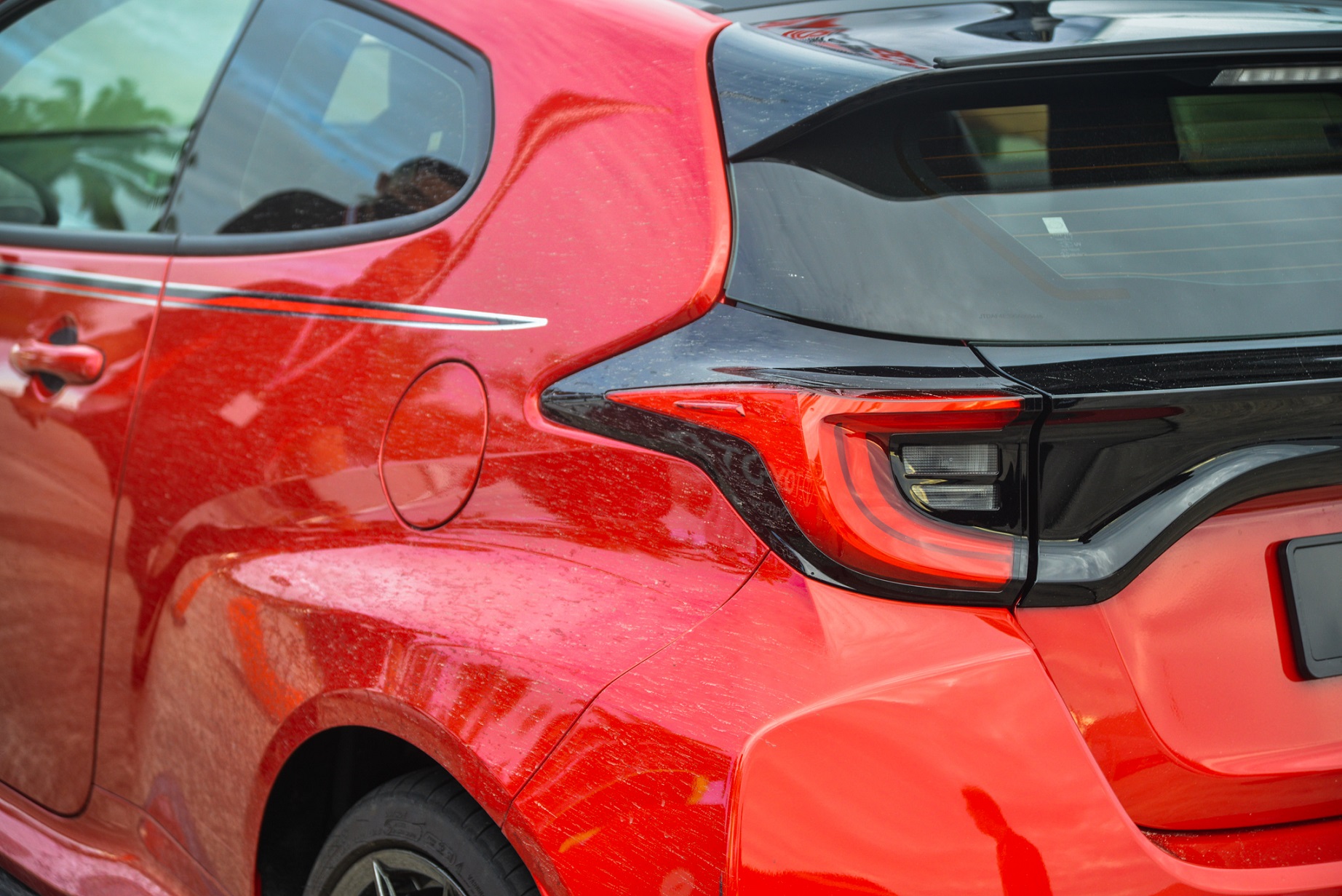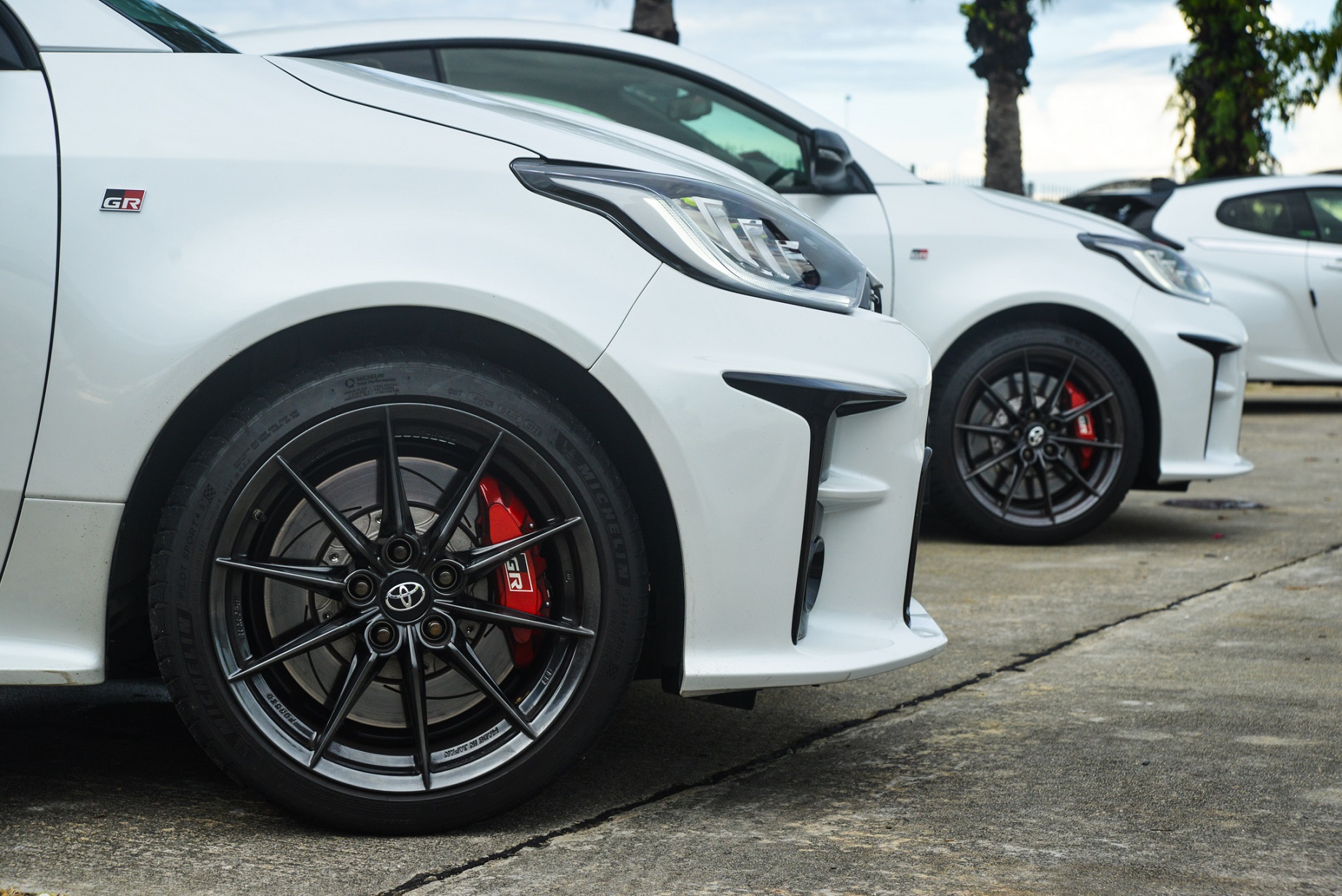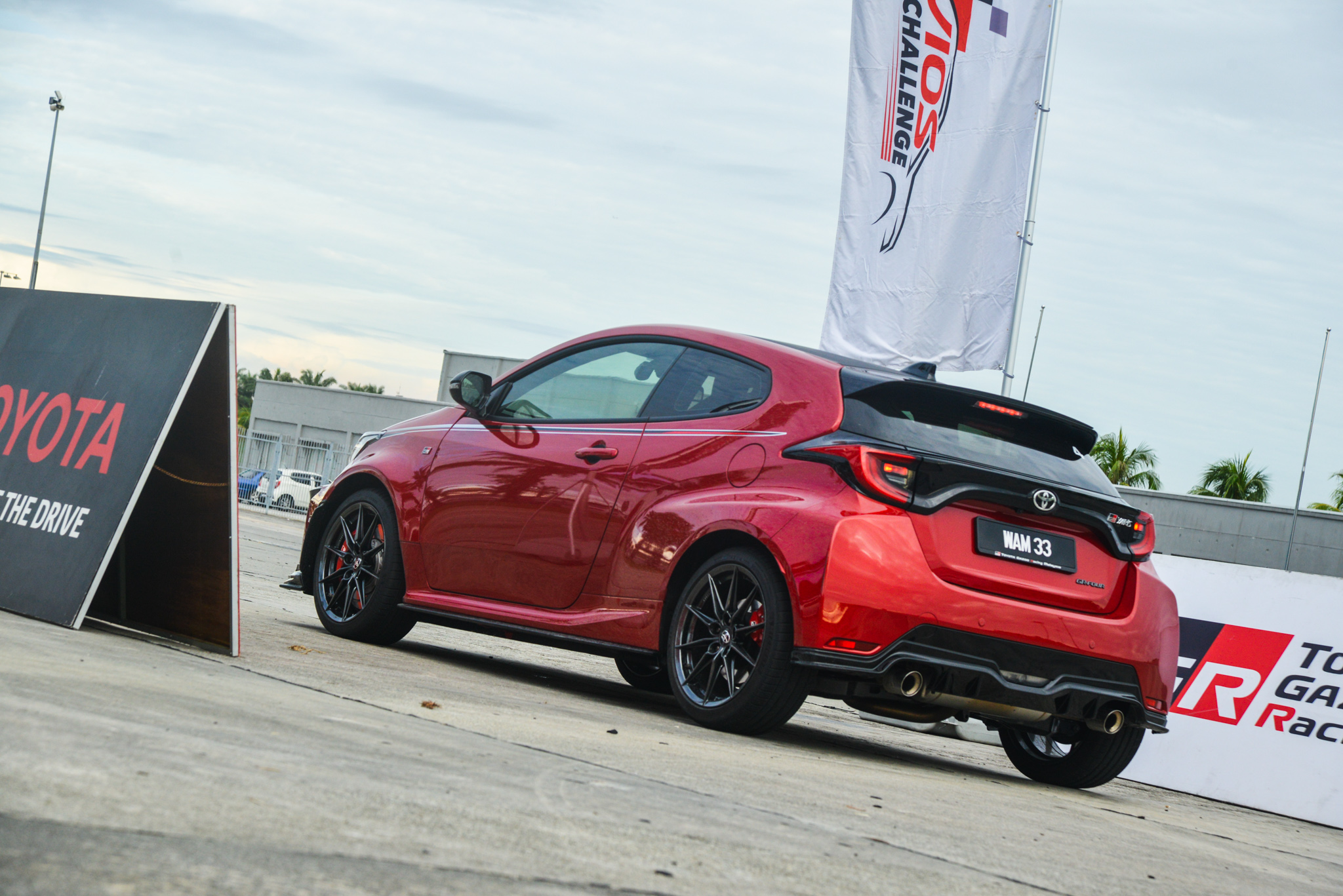2021 Toyota GR Yaris track test: is this the best car (not) on sale today?
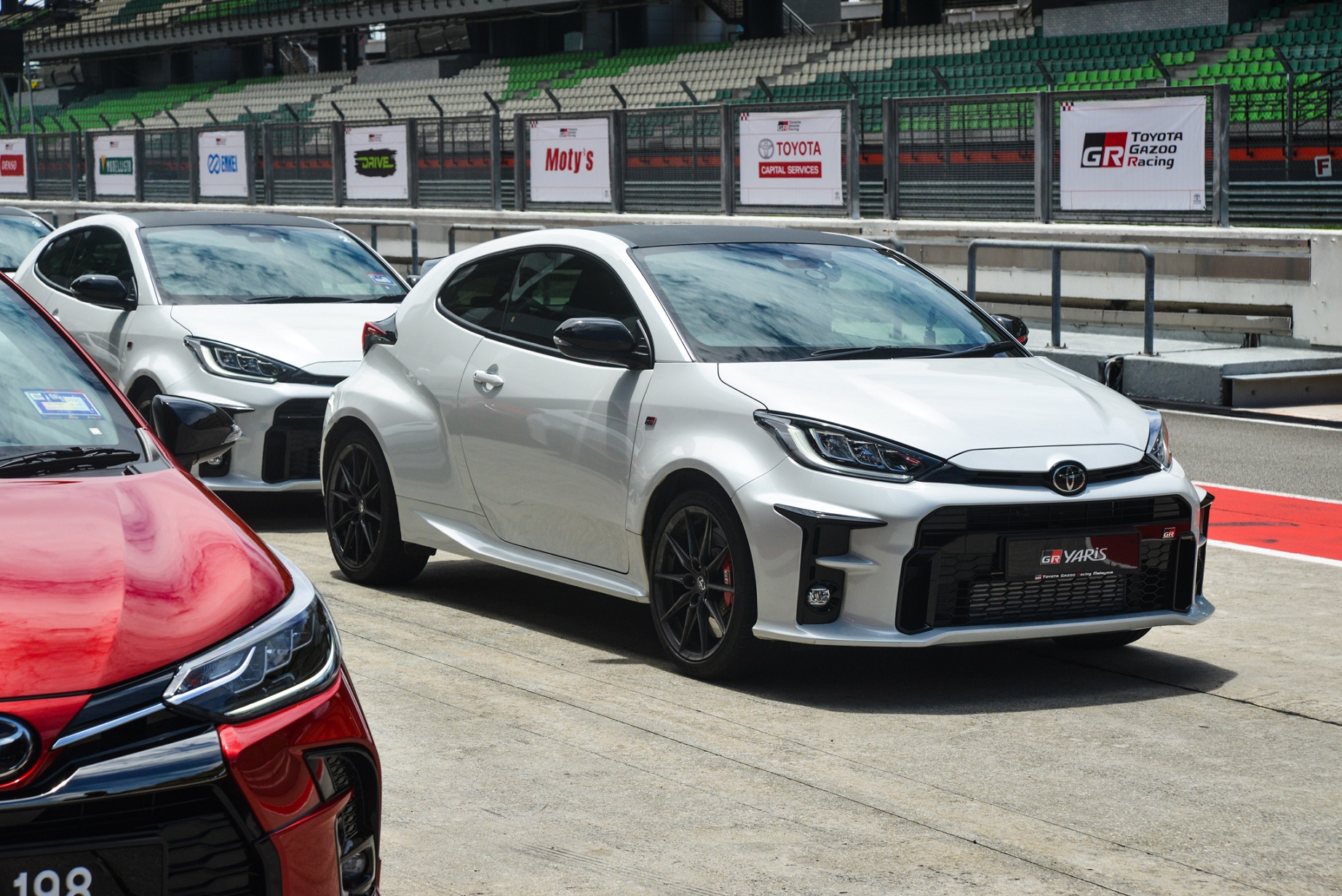
I am not a morning person. But when an invitation to try out one of the most celebrated cars of the year in the Sepang International Circuit within the first hour of daylight on a Saturday lands in my inbox, I’m up by 6AM and trackside by seven. It’s a monumental effort by my standards for what would ultimately be a pretty pointless review (more on this later), such was my desire to see if the hype was real. After all, my colleagues over in the UK aren’t known to dish out perfect tens all too often. So, what was it about the Toyota GR Yaris that got them so smitten, they named it TopGear.com’s Hot Hatch of 2020?
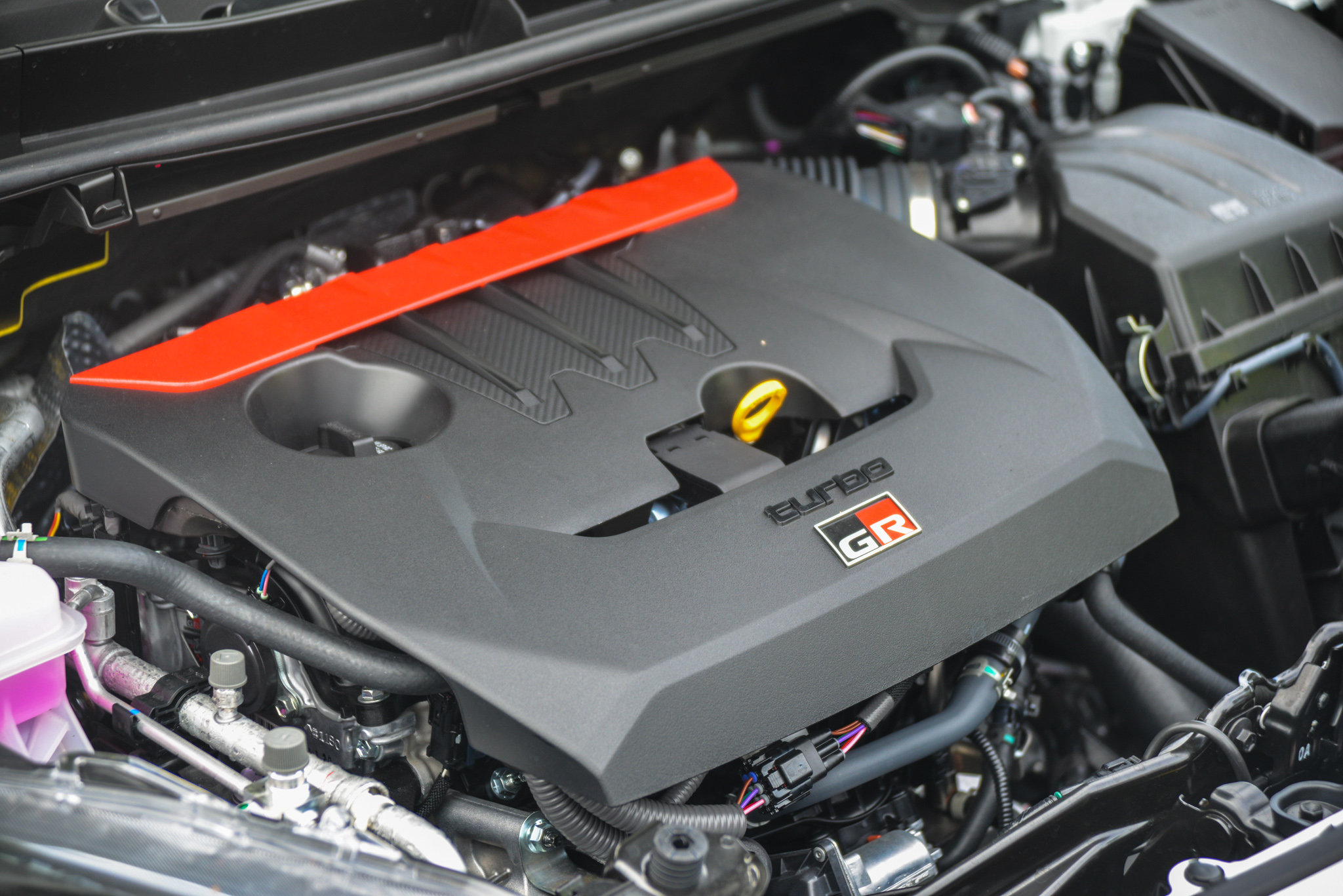
FIRST IMPRESSSIONS – hot hatch is an oversimplification
For starters, the GR Yaris doesn’t even look or sound like your average compact drizzled with extra spice. Its platform is pretty much bespoke after all, with very little shared with the Euro-spec Yaris many would think it’s based on. The bones within the front portion of the car may be similar, but the rear end of the chassis is derived from the TNGA-C platform which underpins bigger Toyotas like the Corolla and C-HR. And it shows.
It doesn’t take an expert to identify the beefier rump at first glance. The GR Yaris is a whole 60mm wider than the UK-spec hatch – 75mm wider than our Asean-spec Vios/Yaris – which makes for a substantial difference in a three-door hatch with such compact proportions. The pronounced wheel arches look particularly provocative too; even Myvis and Satrias with the most illegal widebody kits they can fabricate have nothing on the Toyota’s girth.
The GR Yaris is a legit WRC homologation special after all. So, there is a functional reason for its wider rear track. It has all-wheel drive – Toyota calls this GR-Four – with torque distribution managed by a Torsen electronic differential and under the hood is the most powerful series production three-cylinder engine in the world. The latter is a fact worth repeating because it’s just impossible to tell from the sound it makes, which has an even deeper, bass-rich note than perkier AWD hatchbacks such as the Mercedes-AMG A45 and Volkswagen Golf R. Judging from sight and sound alone, the Japanese alternative feels very much like the realer deal.
Although 260PS and 360Nm sounds somewhat inadequate against the jacked-up Germans on paper and on the straights, the GR Yaris still comes across as the more genuine race-derived thoroughbred on the simple basis that it actually is one. Whether it’s the twin tailpipes, massive brakes, 18-inch BBS footwear or semi-exposed intercooler up front, every sporty element on the GR Yaris seems to serve a purpose. Superficiality comes second and it shows. And the car is all the more loveable for it.
It’s no wonder people are already calling it an instant classic and snapping it up, even at the cool price of RM300k a pop. In fact, the full allocation of 200 or so units for Malaysia has already been completely accounted for. And we haven’t even gotten behind the wheel yet.
LIFE INSIDE – the only place to mine for faults
The cabin of the GR Yaris doesn’t scream rally performance as loud as its exterior. Sure, there’s copious Gazoo Racing branding and some slick kit such as the lovely pair of bucket seats and aluminium pedals; three of them at that. But there’s a distinct budget vibe from certain corners, with the biggest culprit here being the head unit on the Malaysian-spec car which looks like an aftermarket 2-DIN player bolted on the dash into a bulky and unsightly plastic housing. You’d think that each one of the 25,000 cars Toyota plans to build worldwide would look the same. But for some reason, other markets seem to get a sleeker infotainment than what we have here.
Continue nit-picking and you might question the instrument cluster too. It’s something I wouldn’t have singled out five years ago. But at a time when digital displays are all the rage, the GR Yaris’s analogue dials, what with its thin and faint fonts against a plain, black background, do look rather dated. The little LCD panel wedged between them lifts the mood a little, but it’s hard to shake off the feeling that the overall cluster looks like a low-spec version of something that could have been a lot flashier. Then again, those who appreciate the GR Yaris for the fundamentals it stands might prefer this over a bunch of screens at the end of the day.
On the upside, the GR Yaris’s cockpit excels where it matters most: driving. The seating position is spot on and the driver’s main contact points – the steering wheel and gear knob – are truly nice to see and nice to hold. The driving mode selector is also well within reach and fairly straightforward; just push it down for Normal, toggle left for Sport, and right for Track. You’re not burdened by an overcomplicated switchboard that offers the same degree of customisation as a racing sim and that’s just the way it should be in a road car, no matter how serious its sporting pedigree: simple, effortless, and an absolute joy to drive as a result. And I can’t stress that last bit enough…
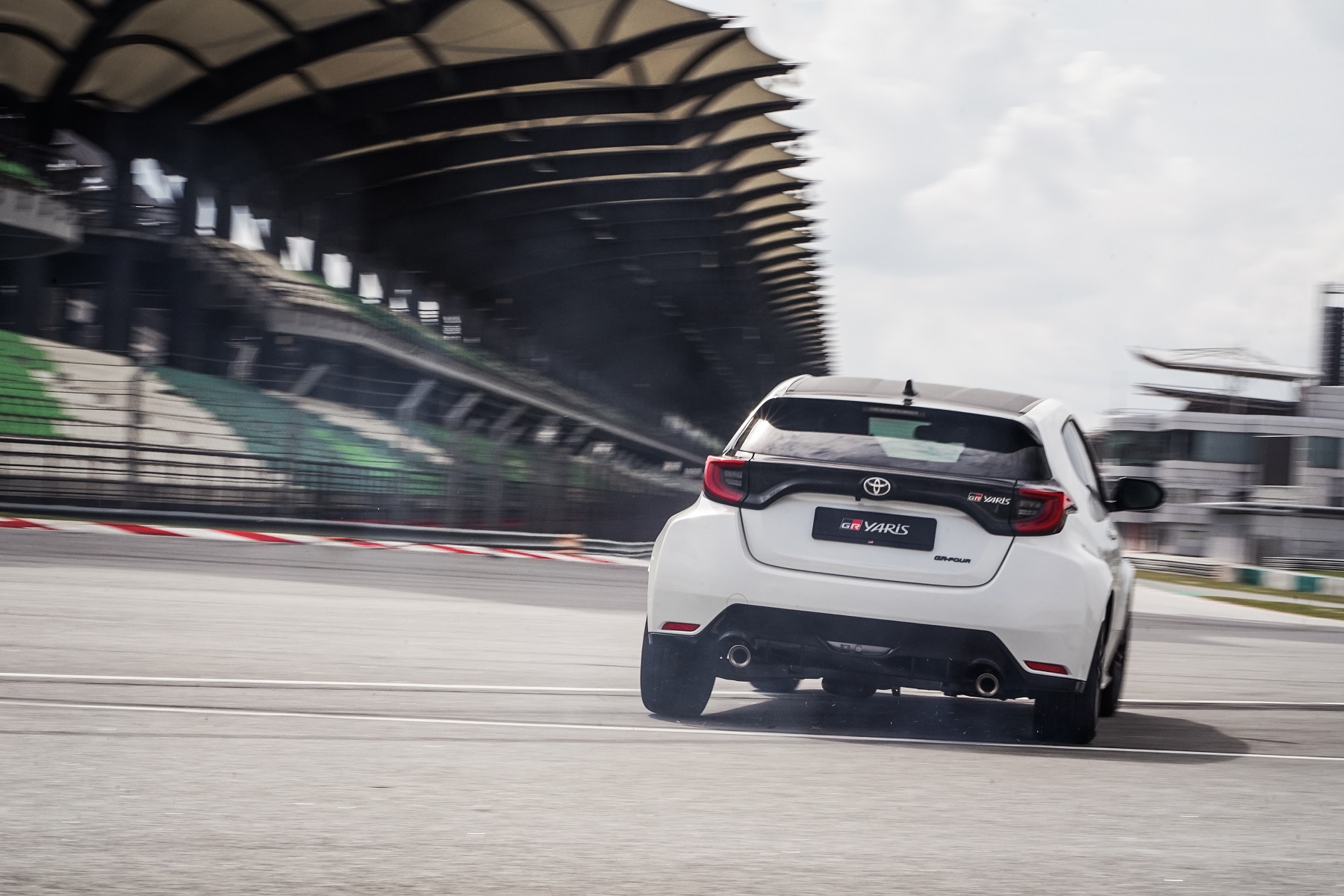
Superficiality comes second and it shows. And the GR Yaris is all the more loveable for it.
DRIVING – where the perfect ten is rightfully earned
Before we were all allowed on the track, Toyota put us through a warm-up session on a gymkhana course. And they certainly weren’t holding back. Smack in the middle of the cone-riddled setup was an intentionally wet roundabout for us to attempt donuts in, all stability systems off. Naturally, yours truly made a fool of himself, going from drifting wide off the mark to spinning too early, such is the GR Yaris’s playful ability to mimic a full-blown RWD sports car without getting past first gear. It was a great deal of fun either way.
In a controlled course stretching only a few hundred metres in length, the GR Yaris launches itself like a rocket-fuelled catapult, exhibiting so much more vigour than its 1.6-litre three-banger suggests on paper. It only takes seconds to deduce that there’s so much more to its sporty make-up than a regular hot hatch, even if it isn’t as razor-focused on lap times as something along the lines of a Honda Civic Type R. And with 70 percent of its torque diverted to the rear axle in Sport mode, it’s a hyper-enthusiastic entertainer like no other car its shape and size. The cheeky growls it emits along the way certainly helps with the overall theatrics.
Once we shifted to the circuit, we used Track mode (obviously), which split the output evenly to across both axles (50:50). This shakes the GR Yaris’s tail happiness off, replacing it with heightened senses in the way it responds to steering and throttle inputs plus a great deal of additional traction to boot. Driven in a hurry, the little Toyota is incredibly well-balanced and composed on the move. And the six-speed manual transmission is surprisingly easy to fiddle with on the fly; downshifting before corners was a breeze, though we suspect the car’s automatic rev-matching feature did half the work for us.
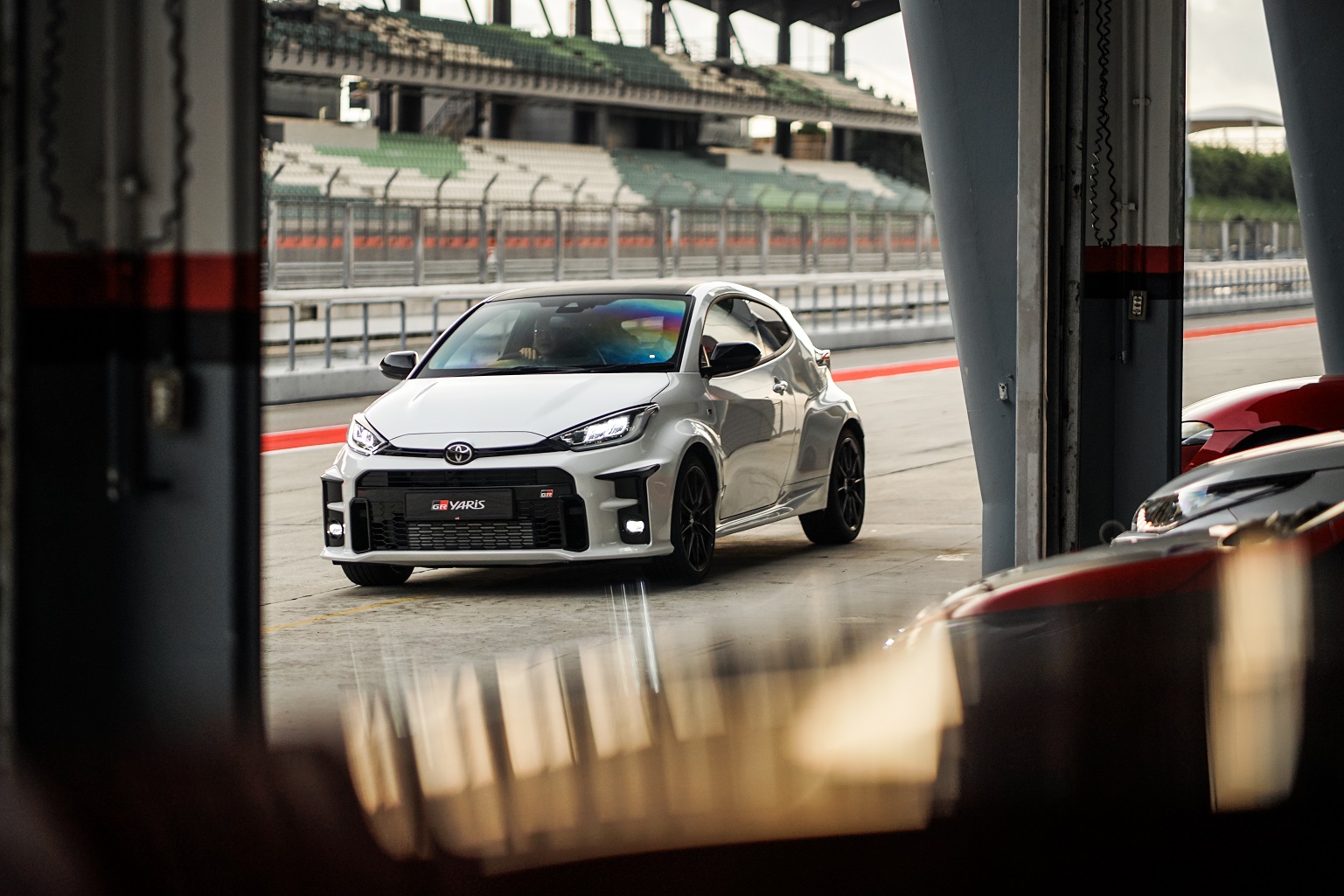
That said, the GR Yaris is far from the fastest car we’ve driven in Sepang; we just about shaved the 190kph mark on the main straight. However, we were still able to stay hot on the heels of the lead car, a GR Supra looking ravishing in red, thanks to its innate ability for maintaining grip and momentum through the circuit’s trickiest bends in proper rally car fashion, understeer nowhere in sight. Even though Toyota has nailed the GR Yaris’s steering, you could technically work your way through the track’s gentler, sweeping sections such as Turns 8-9 and 12-13 mostly by modulating the throttle to free the hands from having to deal with any mid-corner corrections.
Perhaps the biggest takeaway from the whole experience, which is probably where the GR Yaris earns its perfect score, is how it keeps the driver engaged through it all, even when it’s skating through the circuit on the sheer brilliance of its chassis and powertrain alone. It’s a shame we only had three laps to lap it all up – I could have easily done 30 without a care in the world, dead certain that the grin on my face by the last lap would be as wide as it was at the start.
It has an innate ability for maintaining grip and momentum through the circuit’s trickiest bends in proper rally car fashion, understeer nowhere in sight
FINAL THOUGHTS – do they even matter?
Every paragraph you’ve read thus far is merely a long and winding way to get to the same conclusion: that in the GR Yaris, Toyota has produced a supremely accomplished driver’s car by every metric that matters behind the wheel. Its award-winning quality is undeniable. And on the rare occasion when a dinky little hatch which ticks all the right boxes with more poise and sass than a mid-engined supercar comes along, the long and winding way is the only way to go.
Sadly, none of this matters to would-be buyers simply because there isn’t room for any more bookings. If anything, this article only serves as additional validation for the 200 Malaysians who paid good money to be at the front of the queue – a syok sendiri piece, so to speak. In fact, RM300k already sounds like a bargain for a car that has attained collector’s status before it even hit the road. And surely there isn’t a soul that needs to be reminded of how amazing the GR Yaris is, such is its knack of finding its way onto trending lists and magazine covers the world over.
You lucky, lucky fellas…

